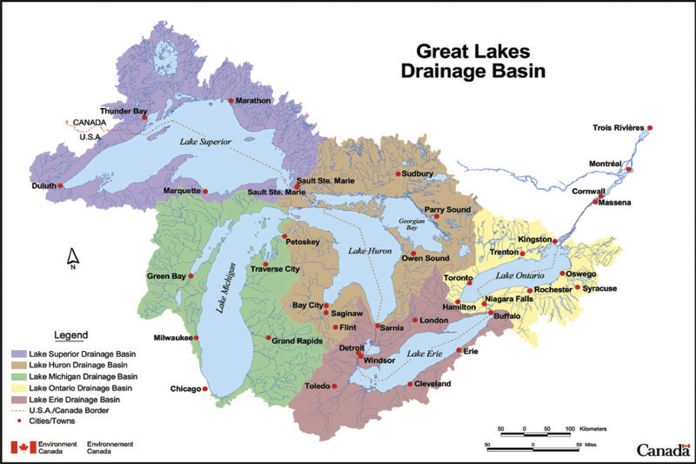BURLINGTON, Canada – The Ontario government is investing $7.47 million to improve the health of the Great Lakes. The funding will support projects that address environmental challenges such as increased levels of pollutants, excess nutrients and rising levels of invasive species. Protecting the Great Lakes is a key commitment in the province’s Made-in-Ontario Environment Plan to ensure water resources and ecosystems are safeguarded for future generations.

“The Great Lakes are an important part of our province’s economic prosperity and the well-being of our communities,” said Jeff Yurek, minister of the environment, conservation and parks. “Our government is committed to working with our partners and investing in on-the-ground projects that will help protect and restore our water resources and improve the health of the Great Lakes so they are safe and beautiful for everyone to enjoy.”
Approximately $5.8 million is being provided to 65 Great Lakes projects run by communities, organizations, universities and Indigenous peoples across the province to address issues critical to the health of the Great Lakes. Some of these projects include:
- A pilot project in Toronto that will cut the time it takes to test water quality at two Toronto beaches from 24 hours to four hours, providing quicker results to protect public health.
- Finalizing a plan to remove the breakwater barrier at Chippewa Park in Thunder Bay to improve the natural water circulation, manage pollutants, and repurpose the breakwater material to create fish habitat.
- The implementation of contaminant reduction practices in key watersheds, such as Garvey-Glenn, Lambton Shores and Main Bayfield, to improve nearshore water quality.
- Monitoring water quality to see if low-impact development and agricultural best practices used by greenhouses in the Leamington-Kingsville area are reducing excess nutrients from entering Lake Erie.
The province is also investing $1.67 million in the Great Lakes Local Action Fund for local projects led by community-based organizations, small businesses, municipalities, conservation authorities and Indigenous communities to protect and restore coastal, shoreline and nearshore areas of the Great Lakes and the rivers and streams that flow into them.





